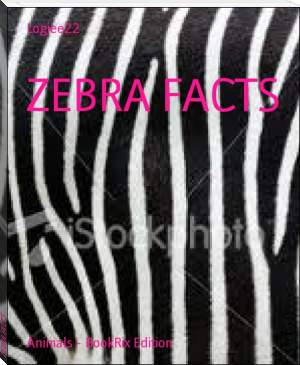Arabian (Dromedary) Camel by Logiee22 (if you liked this book .txt) 📕

Read free book «Arabian (Dromedary) Camel by Logiee22 (if you liked this book .txt) 📕» - read online or download for free at americanlibrarybooks.com
- Author: Logiee22
Read book online «Arabian (Dromedary) Camel by Logiee22 (if you liked this book .txt) 📕». Author - Logiee22
The ancient camel question is: One hump or two? Arabian camels, also known as dromedaries, have only one hump, but they employ it to great effect. The hump stores up to 80 pounds (36 kilograms) of fat, which a camel can break down into water and energy when sustenance is not available. These humps give camels their legendary ability to travel up to 100 desert miles (161 kilometers) without water. Camels rarely sweat, even in desert temperatures that reach 120°F (49°C), so when they do take in fluids they can conserve them for long periods of time. In winter, even desert plants may hold enough moisture to allow a camel to live without water for several weeks.
When camels do refill, however, they soak up water like a sponge. A very thirsty animal can drink 30 gallons (135 liters) of water in only 13 minutes.
Other adaptations help dromedaries thrive in desert conditions. Their nostrils close to keep sand at bay, and they have bushy eyebrows and two rows of long eyelashes to protect their eyes. Large, tough lips enable them to pick at dry and thorny desert vegetation. Big, thick footpads help them navigate the rough rocky terrain and shifting desert sands.
Arabian camels have been domesticated for approximately 3,500 years and have been long valued as pack animals. They can carry large loads for up to 25 miles (40 kilometers) a day. Some cultures judge a person's wealth based on the number of camels they own. Today, nearly all of the world's camels are domestic animals. They are found in northern Africa and southwestern Asia, and have been introduced to Australia.
FAST FACTS
Type:Mammal
Diet:Herbivore
Size:Over 7 ft (2.1 m) tall at the hump
Weight:Up to 1,600 lbs (726 kg)
Group name:Flock or Caravan
Did you know?Unlike many other animals, camels move both legs on one side of the body at the same time.
Size relative to a 6-ft (2-m) man:
Publication Date: 05-23-2011
All Rights Reserved





Comments (0)